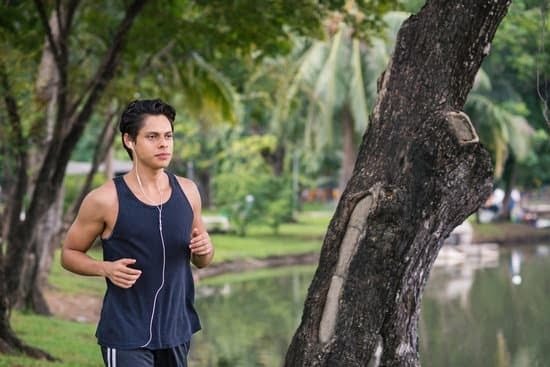Introduction
The ACSM Personal Trainer exam is a comprehensive test designed to measure a candidate’s mastery of the knowledge and skills required to become a certified personal trainer. The ACSM offers the Personal Trainer Certification, which consists of an initial written exam followed by practical hands-on skills evaluations. It includes multiple choice, true/false, scenario-based questions and essays. The exam lasts approximately two and a half hours and covers topics such as human anatomy and physiology, nutrition, exercise techniques and verification techniques. After passing the written portion of the examination, candidates must demonstrate their understanding of kinesiology, biomechanics and safety protocols during the practical assessments. Upon successful completion of both segments of the certification process, graduates are awarded their Certified Personal Trainer (CPT) credential from the American College of Sports Medicine (ACSM).
Exam Structure
The ACSM Personal Trainer Certification Exam is a three-hour, 175 multiple-choice question exam. All questions will be based on the American College of Sports Medicine’s (ACSM) Exercise Science Foundations & Standards of Profession Practice textbook. The test covers eight domains that reflect the breadth of knowledge necessary for personal trainers including anatomy, exercise physiology, biomechanics, nutrition and supplementation, program design, health screening procedures principles of behavior change and professional practice.
Exam questions will present one primary concept in addition to related scenarios or modifications. Each domain has been allocated a weight in accordance with its relative importance to the profession of personal training: Applied Anatomy & Physiology (15%), Exercise Physiology (25%), Biomechanics & Injury Prevention (10%), Nutrition & Enhancement Strategies (7.5%), Exercise Program Development and Safety Procedures (17.5%) Health Appraisal and Prescription (12.5%), Behavior Modification Strategies for Adherence to Activity & Lifestyle Choices (7.5%) and Professional Role Associations & Responsibilities (15%).
Proctors administering the exam are required to provide instructions prior to the start time that explain acceptable use of scratch paper and calculator as well as emergency protocols should a disruption occur during the exam administration period. Test takers must complete all 175 questions within the 3-hour time frame allotted or they risk not receiving credit for their score processing fee which incurs an additional fee for retaking the whole exam – no partial scoring is available at this time for test takers who do not finish before the clock runs out on their first attempt!
Exam Duration
The ACSM Personal Trainer Exam consists of 150 questions and requires approximately four hours to complete. The exam is divided into three parts with 50 questions each: Foundations of Exercise Science, Applied Sciences, and Personal Training. Though anyone can finish the exam within the allotted time frame, it is important to properly manage your energy and focus during the exam in order to optimize performance.
It is recommended that test-takers plan on taking two “breaks,” or short pauses, during the examination process, in order to stay fresh throughout. Because a majority of the questions are multiple-choice and require only simple calculations, devote extra attention to reading all questions carefully to ensure accuracy in your responses. Additionally, use all available resources wisely; it may be helpful to review any notes taken prior to taking the exam as those details could assist in answering certain questions more quickly or accurately. Finally, take advantage of multitasking options such as using your finger or pencil as a guide when you need a little more time for each response on paper exams without needing to waste time rereading lengthy prompts several times over again.
Format
The ACSM Personal Trainer Exam is a four-hour exam consisting of 150 multiple choice questions. The exam covers five domains of knowledge related to fitness, exercise, and health promotion: Exercise Physiology; Nutrition; Functional Anatomy; Health Appraisal and Exercise Programming; and Professional Responsibilities.
There are two different types of multiple choice questions on the ACSM Personal Trainer Exam. Multiple Choice Questions (MCQs) require you to select one correct answer from four or five answer options provided. Multiple Response Questions (MRQs) require you to select more than one correct answer from two or more answer options provided.
When answering MCQs, it is important to read all the answer options carefully and eliminate all incorrect answers before selecting a response option. You should always rely on your understanding of the course material rather than relying solely on your intuition when answering MCQs. When answering MRQs, make sure to read all the answer options carefully and eliminate all incorrect responses before selecting one or more response options that are correct. Additionally, remember that if none of the response options apply to the question, marking “none” or “true” as an answer might gain points for you depending on the format of the MRQ given.
When taking a multiple choice test it is always helpful to use strategies such as skimming questions ahead in order to plan out how much time it will take you and which portions will be easier or harder for you beforehand. It’s also beneficial to track your progress through the test so that you can adjust your pacing as needed in order to attempt as many questions as possible within the limited time available for completing them. Lastly, be sure not to waste too much time attempting difficult questions since there are so many other areas covered by the exams with higher scores associated with them.
Practical Components
The practical section of the ACSM Personal Trainer exam consists of 40 questions. Approximately 30% of these questions are focused on evaluating a hypothetical client’s muscular, cardiorespiratory, and flexibility fitness levels. The remaining 60% of the practical questions will assess your instructional aptitude when it comes to delivering guidance for safe and appropriate exercise programming.
This component of the exam also encompasses four fitness assessment and instruction station tasks that last 10 minutes each. Each task is designed to show your knowledge of how to perform fitness assessments such as assessing body composition, cardiorespiratory endurance, musculoskeletal strength, and cardiovascular endurance tests. You will also be assessed on instructing an individual exercise session according to healthy exercise guidelines as provided in the American College of Sports Medicine (ACSM) Exercise & Physical Activity Testing and Prescription manual, 9th Edition. Additionally, you must demonstrate safety principles when performing physical activity assessments and providing relevant health-related advice as it pertains to an individual’s current physical status.
To be successful on the practical portion of the ACSM Personal Trainer Exam you should understand both theoretical concepts and have effective communication skills. Familiarize yourself with the concepts from anatomy through kinesiology before attempting this part. You may also wish to practice beforehand by performing mock assessments or teaching real people proper exercise technique from which you can draw upon during the exam. Finally, being mentally organized and prepared can help make sure you complete each station in a timely fashion so that you have time for a few review questions afterwards if needed.
Preparation Tips
Long-term planning: Prior to taking the ACSM Personal Trainer exam, it is important to understand the basic qualifications and requirements for being certified as a Personal Trainer. One must graduate from an accredited exercise science program or have equivalent experience in personal training and fitness instruction. It would also be beneficial to review various books and resources related to exercise physiology, nutrition, biomechanics, and other related topics. Additionally, it is wise to find out what types of questions will be on the exam, including topics such as cardio vascular endurance, muscular strength and endurance, body composition testing protocols, balance training techniques, flexibility exercises assessments and more.
Short-term strategies: Before taking the ACSM Personal Trainer exam one should create a study plan in order to adequately prepare for the test. Each day or week should have specific goals that are based around topics that are likely to appear on the test so that one can pay extra attention to these topics when studying. It is advised that practice exams or online quizzes be completed multiple times in order to get familiar with the types of questions that will appear on the actual exam. In addition, studying with someone else could help keep one motivated as well as having extra resources for solving any type of problems that arise during preparation time. Lastly, it is recommended to take breaks throughout preparation time so do not feel overwhelmed by large amounts of material reviewed at once! The ACSM Personal Trainer Exam typically takes about three hours and consists of 175 multiple choice questions (145 scored plus 30 pilot questions).
Conclusion
The ACSM Personal Trainer Exam typically takes around three hours to complete. While the exam is comprehensive and covers a wide range of topics related to personal training, you should feel confident that the content is manageable and achievable with the right amount of preparation. Prior to taking the exam, you should read through all the material provided by ACSM and spend time practicing your skills. You should also contact any potential employers to discuss what types of certifications they require for their trainers, as many employers do value certifications from organizations such as ACSM. Once you have completed the exam, you will receive your score soon after as well as instructions for how to apply for your certification. All applicants must meet certain requirements for certification; however, once these are met, it’s possible to gain recognition as a certified personal trainer from ACSM in two weeks or less.

Passionate about providing useful information to anyone with an interest in the field of Personal Training, I strive to pass on to our readers quality information and to answer any questions about Personal Trainers, the work they do and how to become one.





